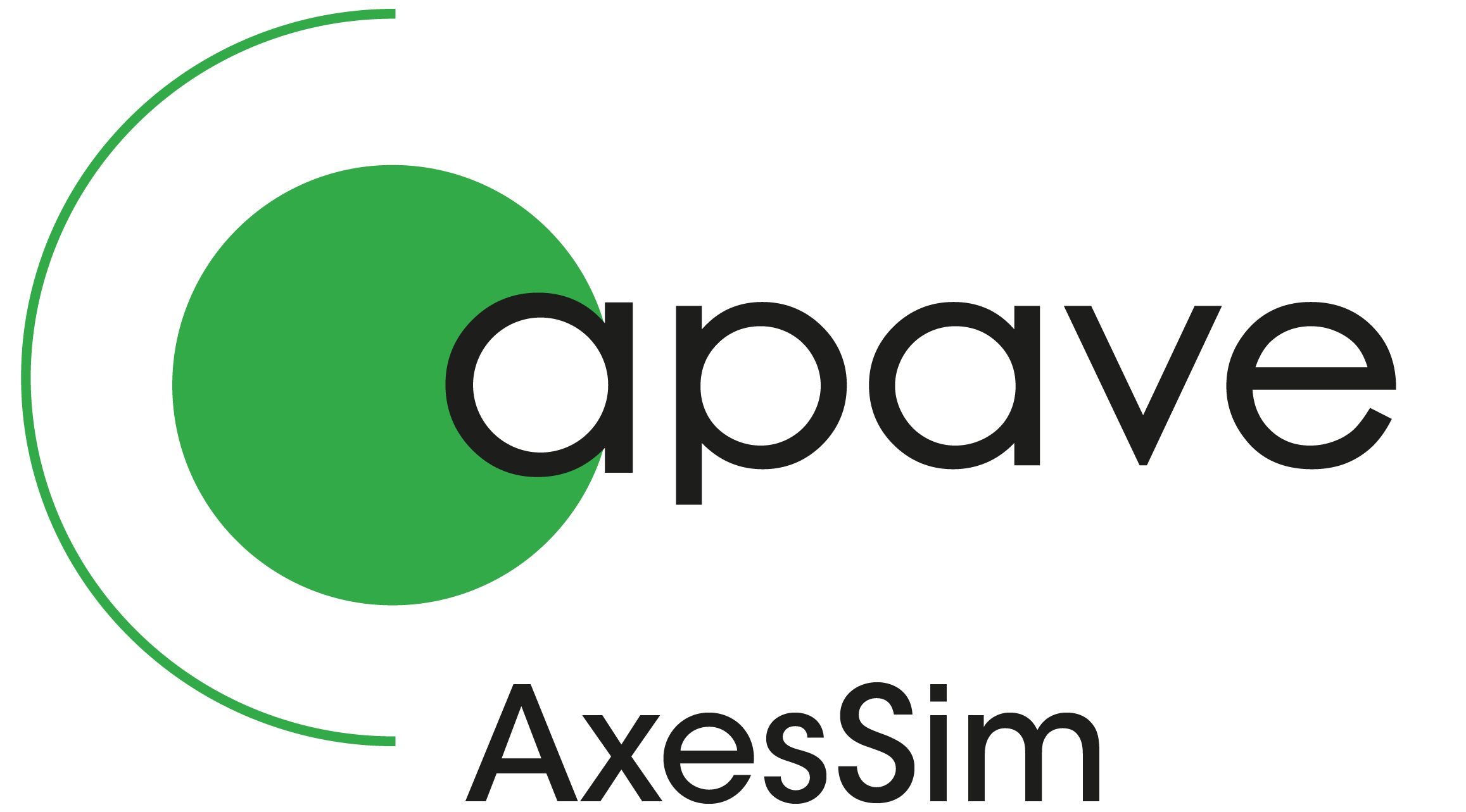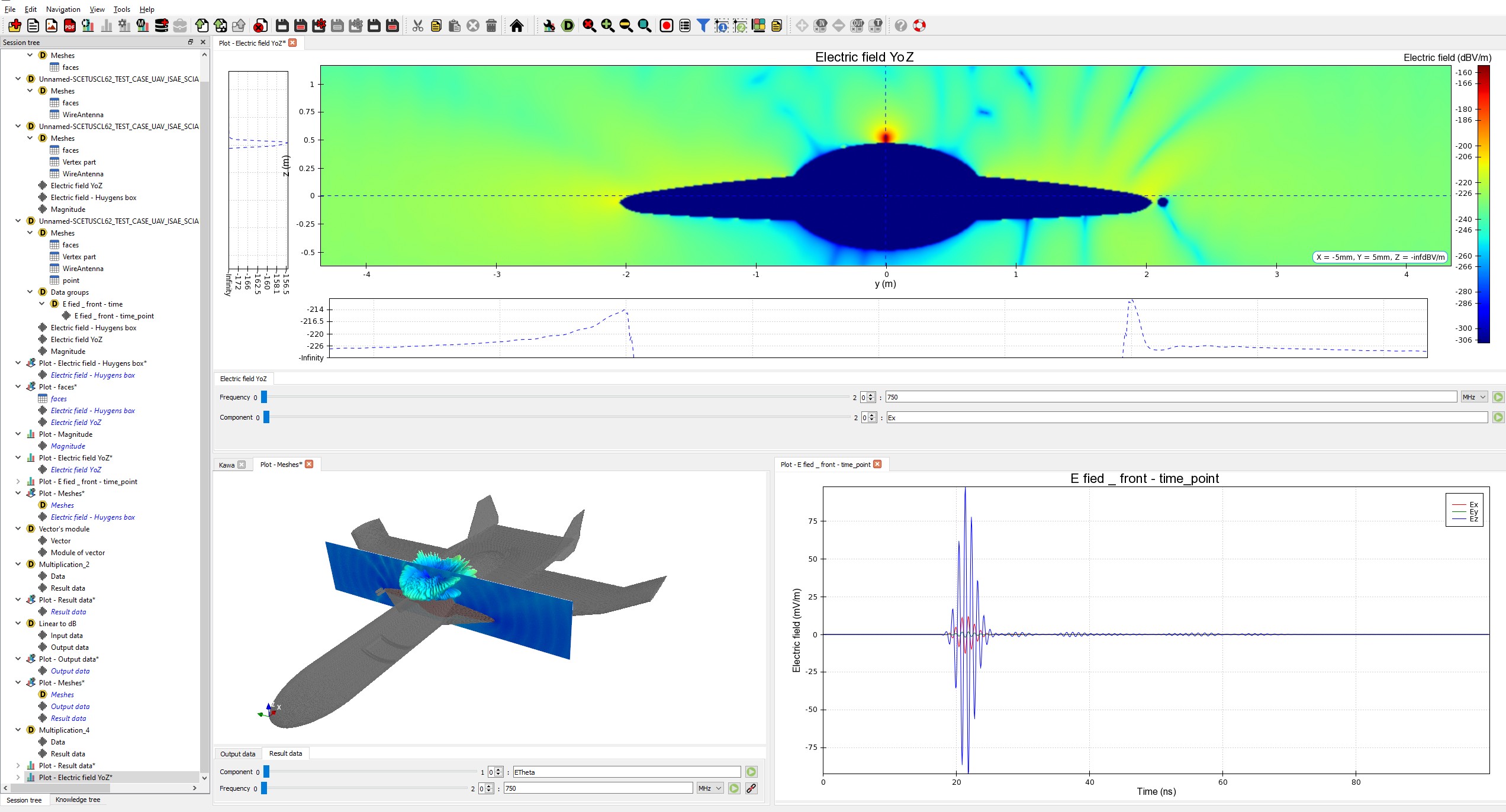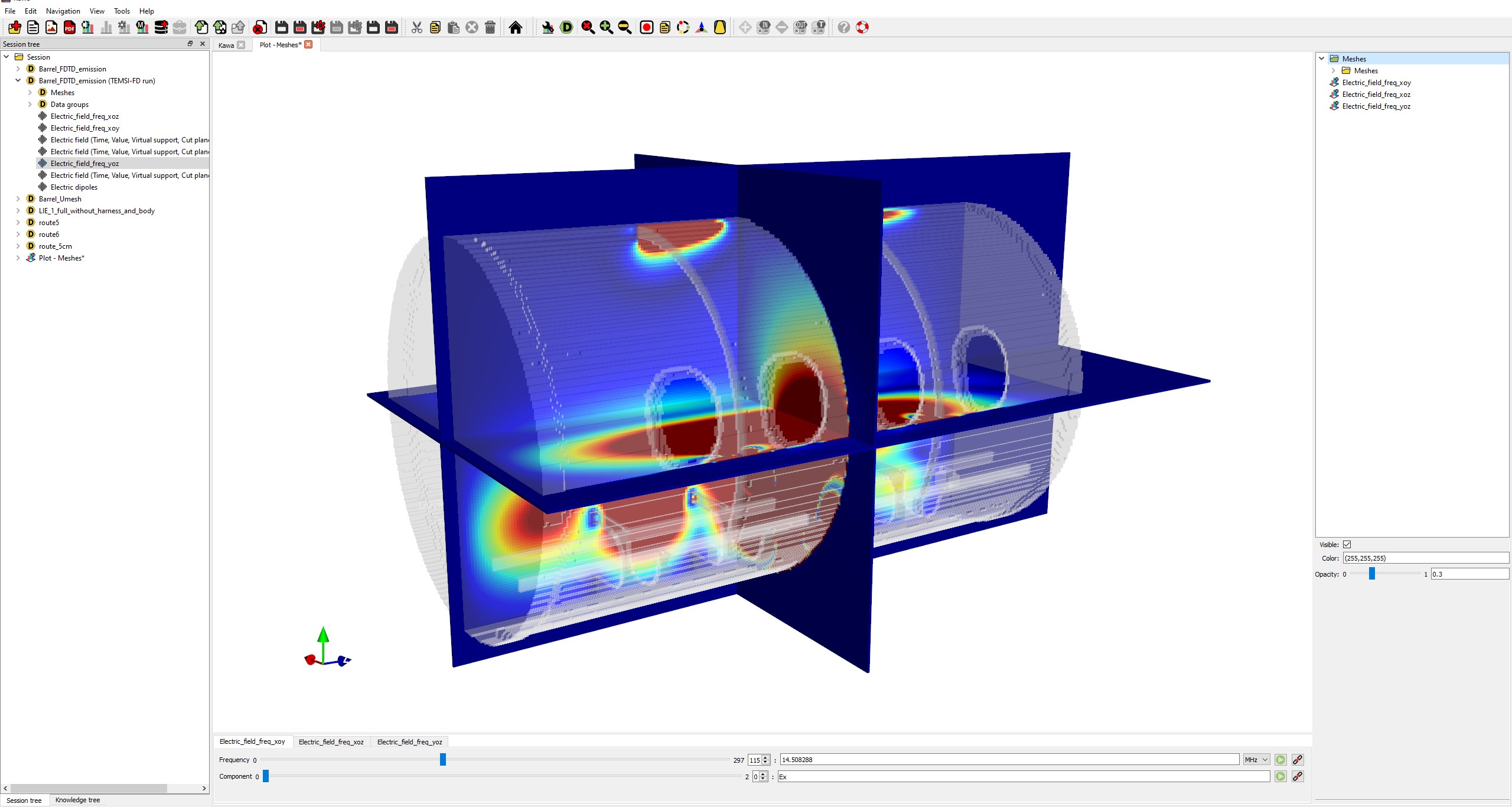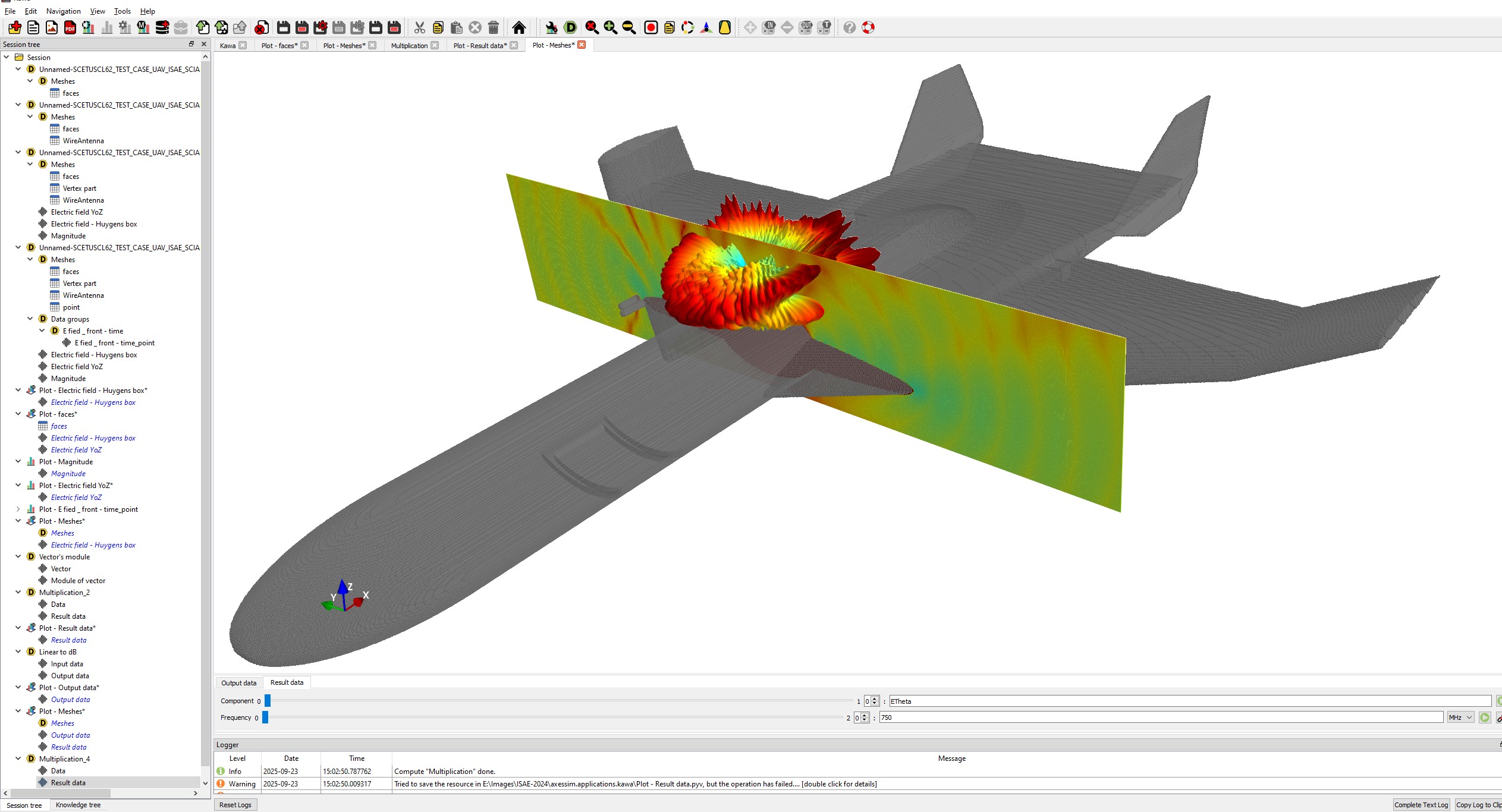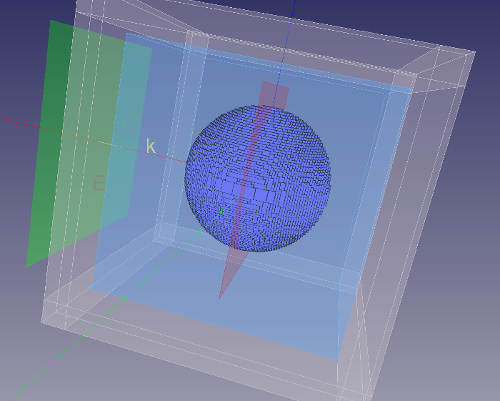AXS-EMC
ElectroMagnetic Compatibility
AXS-EMC (ElectroMagnetic Compatibility) is a powerful simulation software for evaluating interactions between complex structures of large dimensions (composite materials, installed wiring harnesses, etc.) and electromagnetic environments.

AxesSim – ElectroMagnetic Compatibility (EMC)
ElectroMagnetic Compatibility (EMC) is the ability of an electrical or electronic system to function satisfactorily in its electromagnetic environment without introducing intolerable electromagnetic disturbance to any other equipment in that environment. Essentially, it is about controlling both emissions (noise generated by the device) and susceptibility/immunity (resistance to external noise).



Radiation/Emission (EMI) control relies on prediction and mitigation of unwanted fields emitted by devices. This includes modeling the radiation of cables (common/differential mode) and equipments, identifying leakage through shielding (seams, slots), …
Susceptibility (EMS) is the system’s ability to operate correctly in the presence of external disturbances. During their operational life, complex systems are subject to electromagnetic environments that may occur due to a variety of natural or man-made environmental sources such as electromagnetic impulses (EMP), radio frequency interference (RFI), high intensity radiated fields (HIRF), electromagnetic interference (EMI), lightning strikes, etc. Simulation allows evaluation of Radiated electromagnetic fields penetration inside systems and its coupling with cables and equipments.
AXS-EMC (ElectroMagnetic Compatibility) is the ideal simulation software to manage large-scale and highly complex issues described above.
AXS-EMC simulation software allows :
The evaluation of radiated EM fields by cable harnesses installed in complex systems (mandatory for EMC design of systems)
The assessment of radiated and conducted constraints at the equipment level (essential to define protection of the systems as well as to check their robustness during qualification / certification phase)
By making it possible to visualize current paths and invisible fields, AXS-EMC is essential for optimizing design, identifying hotspots, and ensuring compliance with EMC standards before expensive laboratory testing.
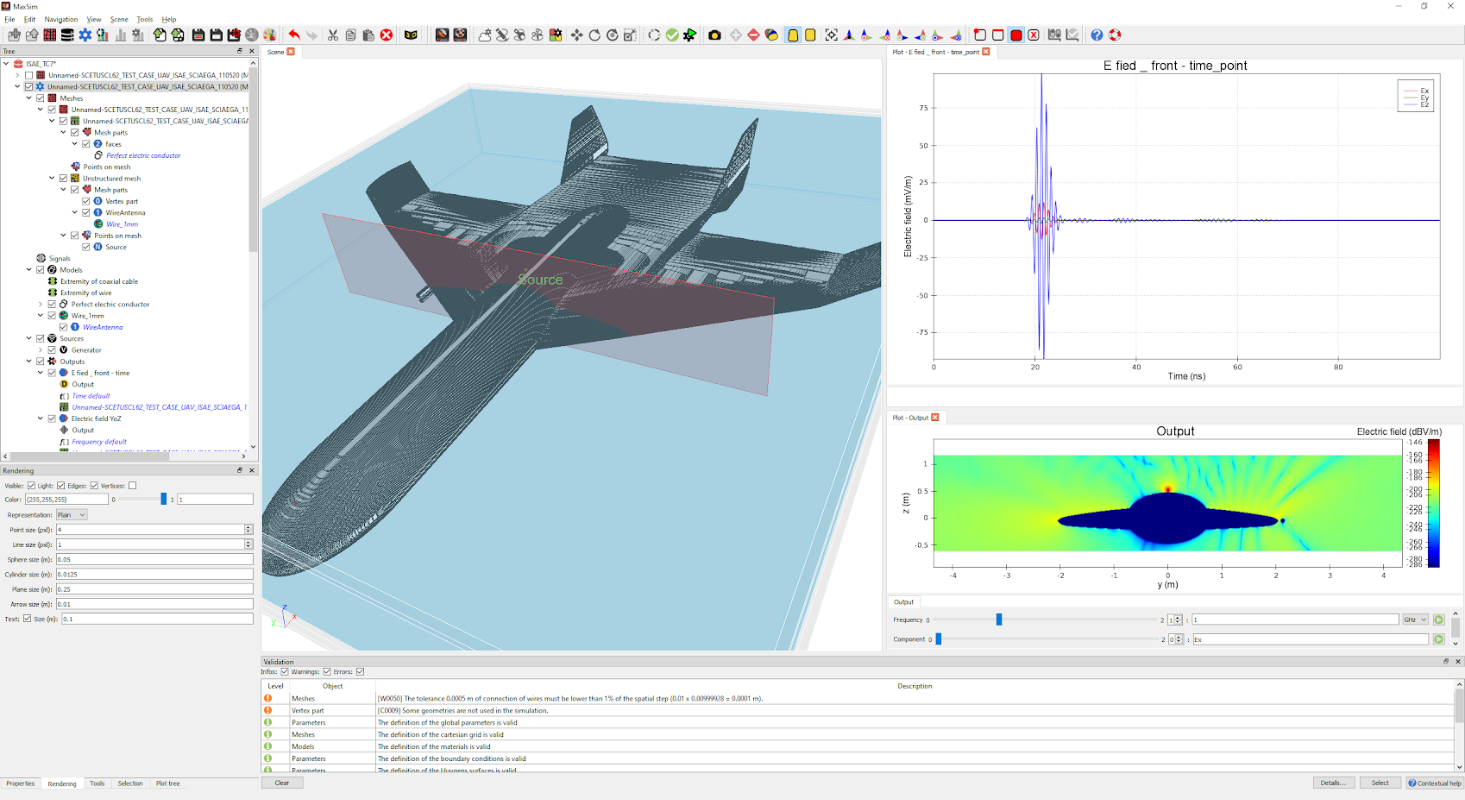
AXS-EMC (ElectroMagnetic Compatibility) relies on MaxSim tool.
It provides a set of powerful features for such issues :
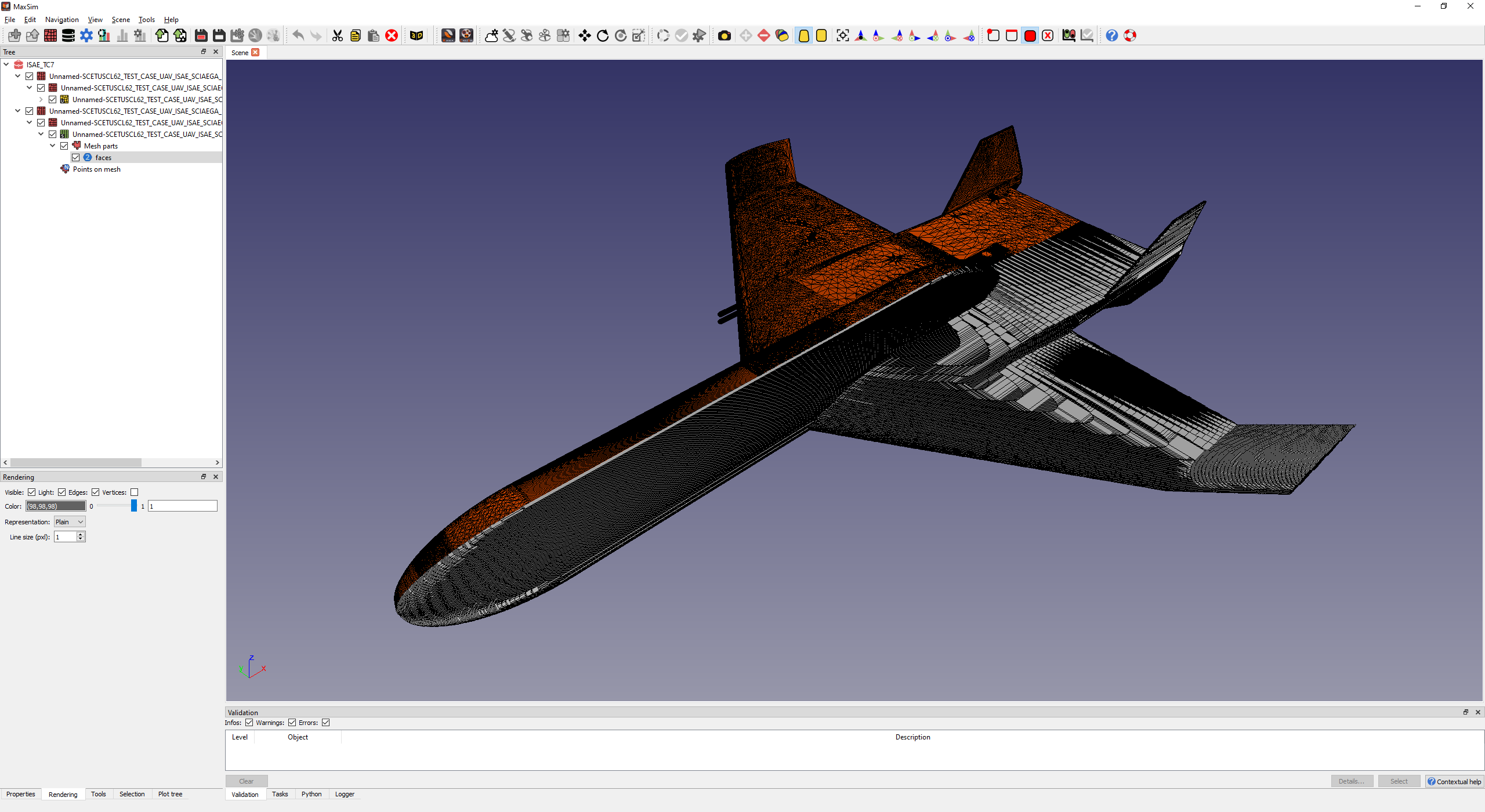
A very efficient parallel FDTD solver for reliable resolution of major problems
A complete set of sub-cellular models (wires, cables, slots, joints, …) that allows to realistically take into account electrical and electromagnetic characteristics of the system, with limited constraints on the size of the mesh
Dispersive and anisotropic material models (imperfections in screening material, eg : skin effect or penetration of radiation through finite conductivity walls)
AXS-EMC (ElectroMagnetic Compatibility) also relies on CableSim.
It offers advanced features for analyzing complex cable bundles installed in their operating environment such as :
Handling of multi-level shielding
Non-linear protection circuits against transients
Resolution of cable harnesses with the Multi-Conductor Transmission Line method (MTLN)
Common mode return current in system installation managed by 3D solver (Bidirectional coupling method).
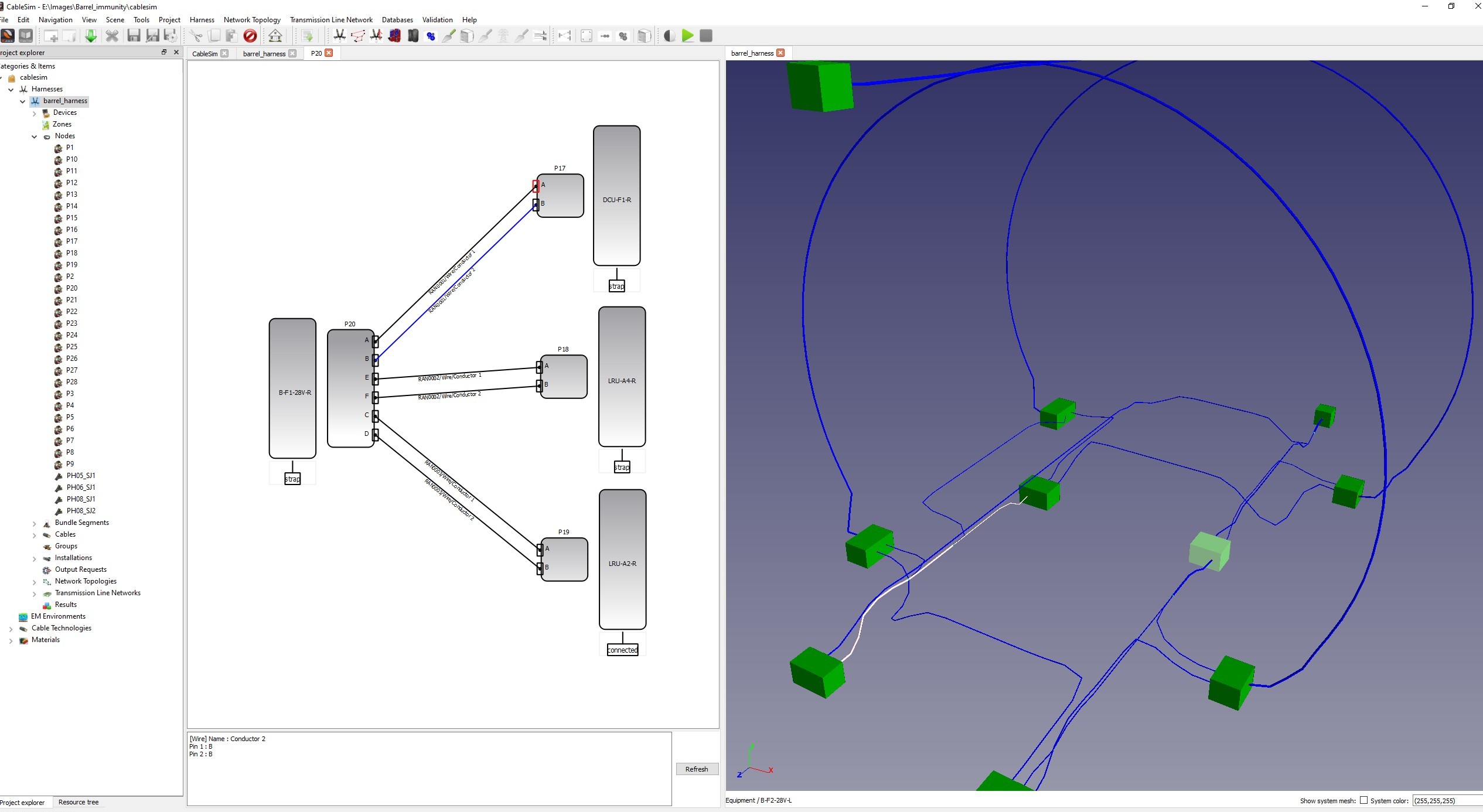
AXS-EMC (ElectroMagnetic Compatibility) embeds the post-processing tool KaWa :
A full set of plots allowing a quick and easy analysis.
- 1D curves: real and complex curves, polar views, histograms
- 2D: mappings and contours renderings
- 3D views: points, quivers, surfaces.
Multi-dimensional data post-processing capabilities (signal processing, statistical analysis, …)
Use cases solved by this solution
AXS-EMC (Electromagnetic Compatibility) underlying technologies
MaxSim
MaxSim is dedicated to EMC analysis of complex large systems with a user-friendly and productive 3D interface. It is focused on creating electromagnetic scenes for computation with a FDTD method and is able to integrate between 3D modeling tools (CAD) and data analysis tools.
CableSim
CableSim is dedicated to the study of conducted emission, to electromagnetic compatibility and signal integrity of wiring harnesses from the design phase.
Kawa
Kawa is a conveyor of capitalization and sharing of technical and scientific knowledge. It is also an essential tool for data processing for the exploitation of simulation results.
>Read more about MaxSim
>Read more about CableSim
>Read more about Kawa
